UX, UI Design · John Lewis · 2020
A look at the evolution of John Lewis’ delivery propositions.
This is a follow up from the previous case study I produced in 2016 - Delivery Options Redesign. In that case study, I looked at the redesign of a common delivery type (one-man delivery) however, this is a holistic redesign of all of our delivery propositions.
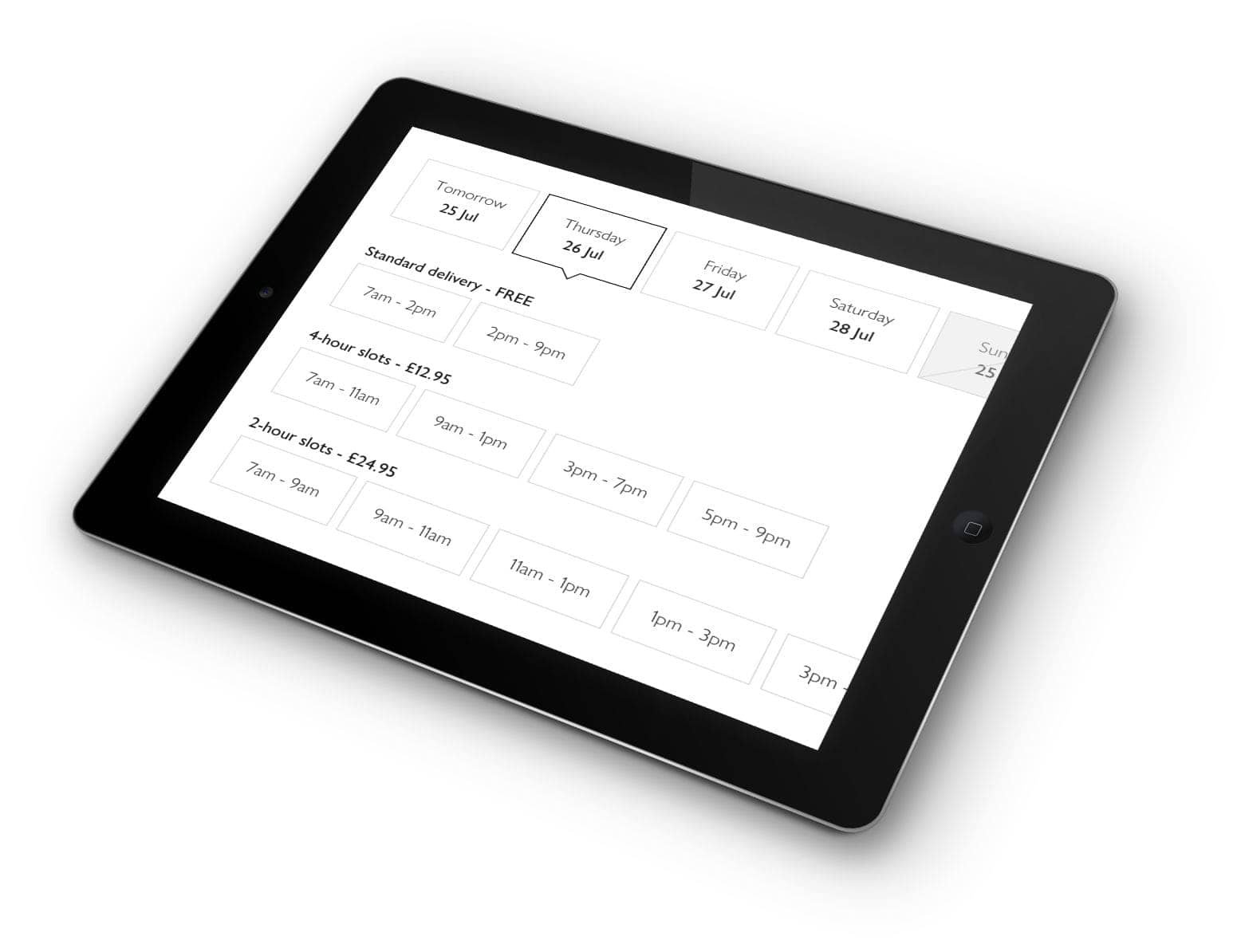
At John Lewis, there are three main delivery methods depending on the type of item(s) you are ordering. I have been responsible for the design and iterations up to this point.
Delivery for small items such as clothes, small electricals and household items. The customer has the option of Standard delivery which will come within 5 working days or can choose a day and also request a morning delivery.
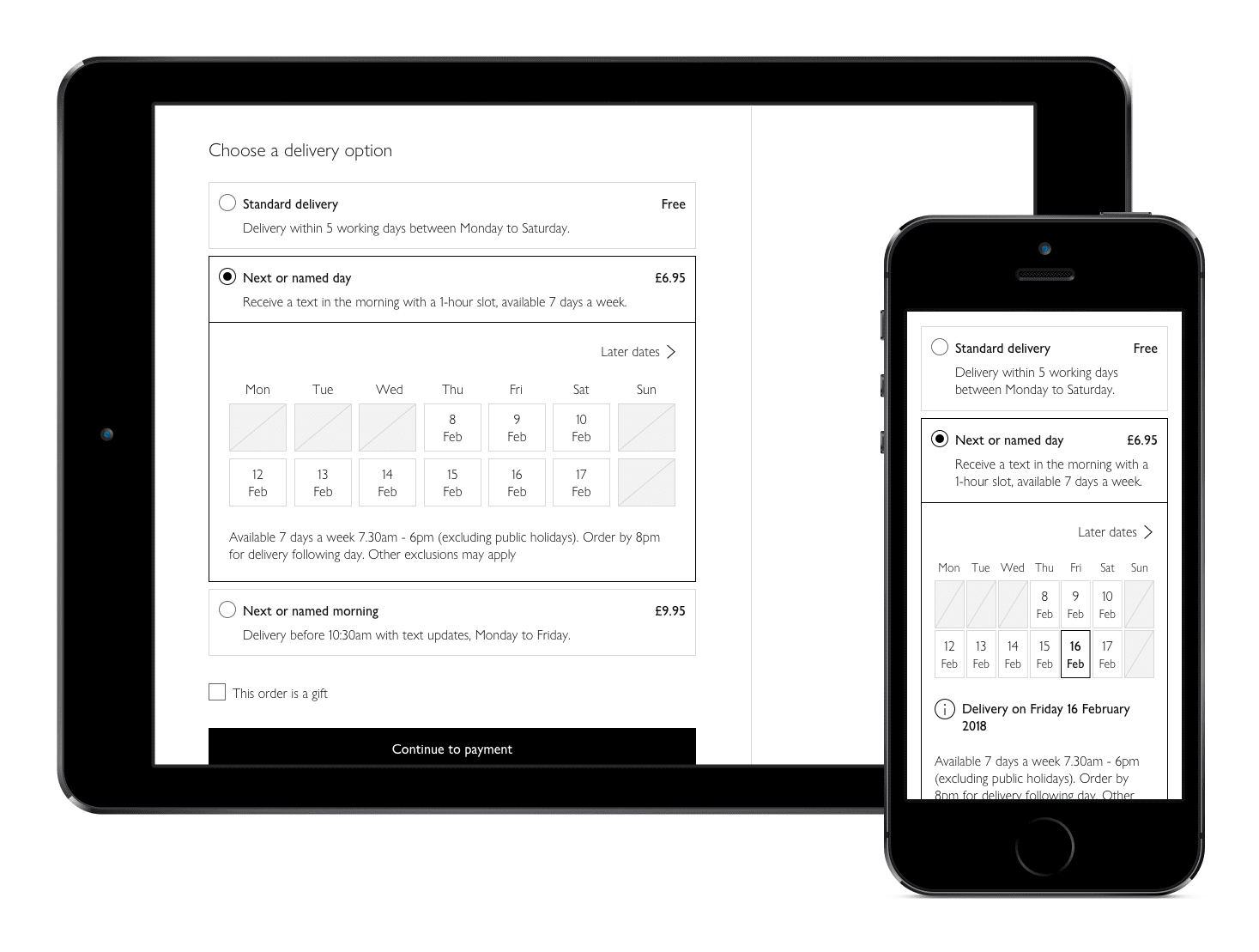
The common delivery type for larger items including sofas, kitchen appliances, TVs, etc. The order is delivered from the John Lewis warehouse. The customer can choose a specific day and a 6-7 hour time slot for free. More specific time slots are available at a premium price.
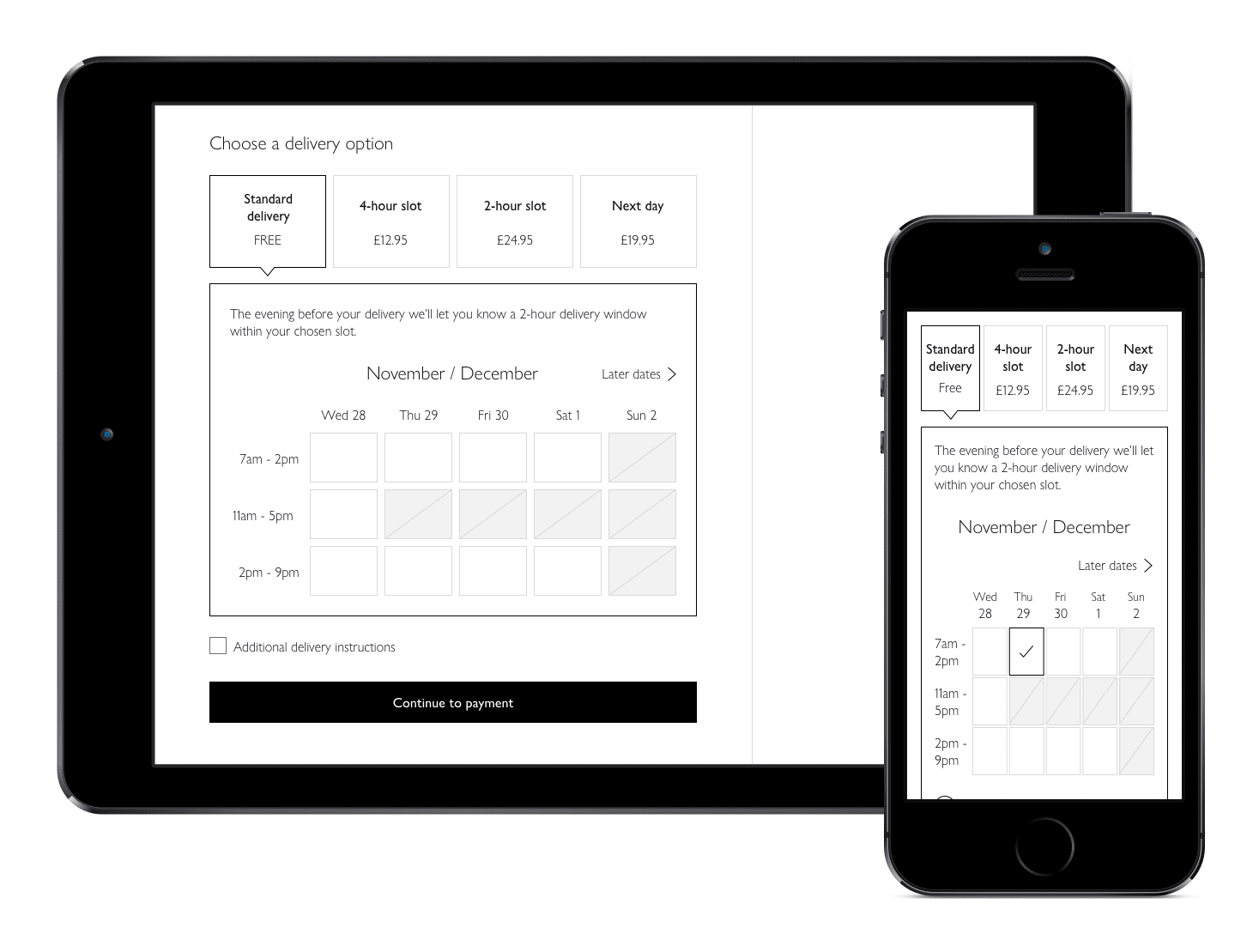
Another two-man delivery, however, these large items come directly from the supplier. The customer can choose a day but not a time.
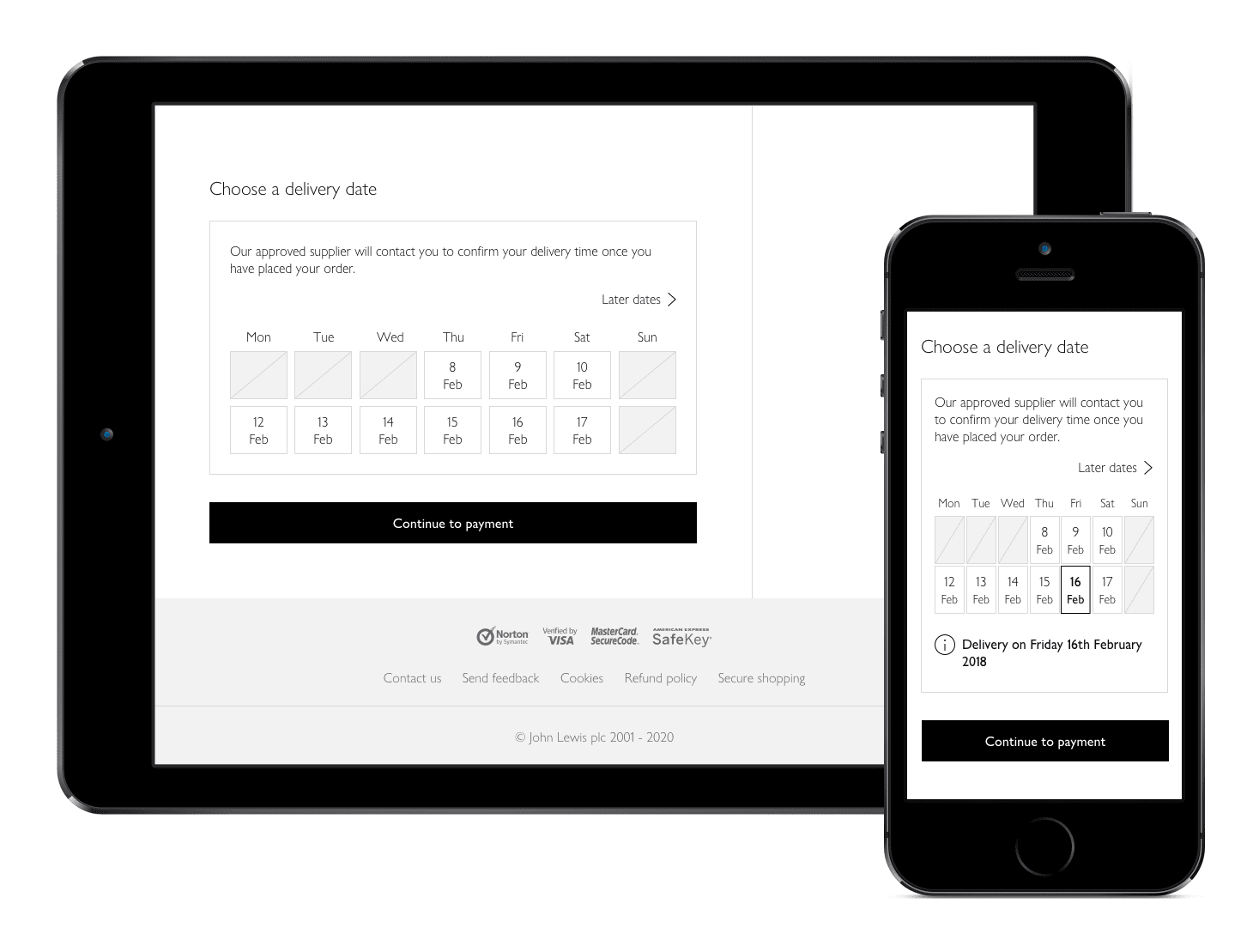
The design grids had been performing well up to this point and were well understood by our customers. However, new delivery propositions had come in from the business which the current design may not handle. The new propositions are listed below along with the problems.
There are already 3 radio options for one-man delivery in the current design. Adding another 3 options could result in an exhaustive list with too many options for the customer to process.
If the price remained the same this would be an easy enhancement, simply making the Sunday slot active. However this would be tricky in the current design as the price of all the slots is in the heading, so Sunday would likely need another independent radio option.
As mentioned above, the price for each delivery option is in the tab for the panel. So to charge for Saturday would mean the price in the tab would be misleading, as it currently says 'Free'. Changing this wording to 'From free' or similar wouldn't be great for clarity upfront. Plus the GVF calendar on mobile is already quite 'squashed' as it is.
On top of these propositions, there has also been an ongoing desire to try and align the 3 grids. Whilst I've spent a lot of effort in trying to ensure consistency amongst them through design, they are 3 separate components which mean 3 different sets of code. As part of this redesign, I attempted to consolidate these grids to ensure they were using the same elements, resulting in easier maintenance going forwards and easily sharable with other teams.
To summarise, the objective was to align the 3 delivery grids into one consistent pattern that caters for all the new delivery propositions above.
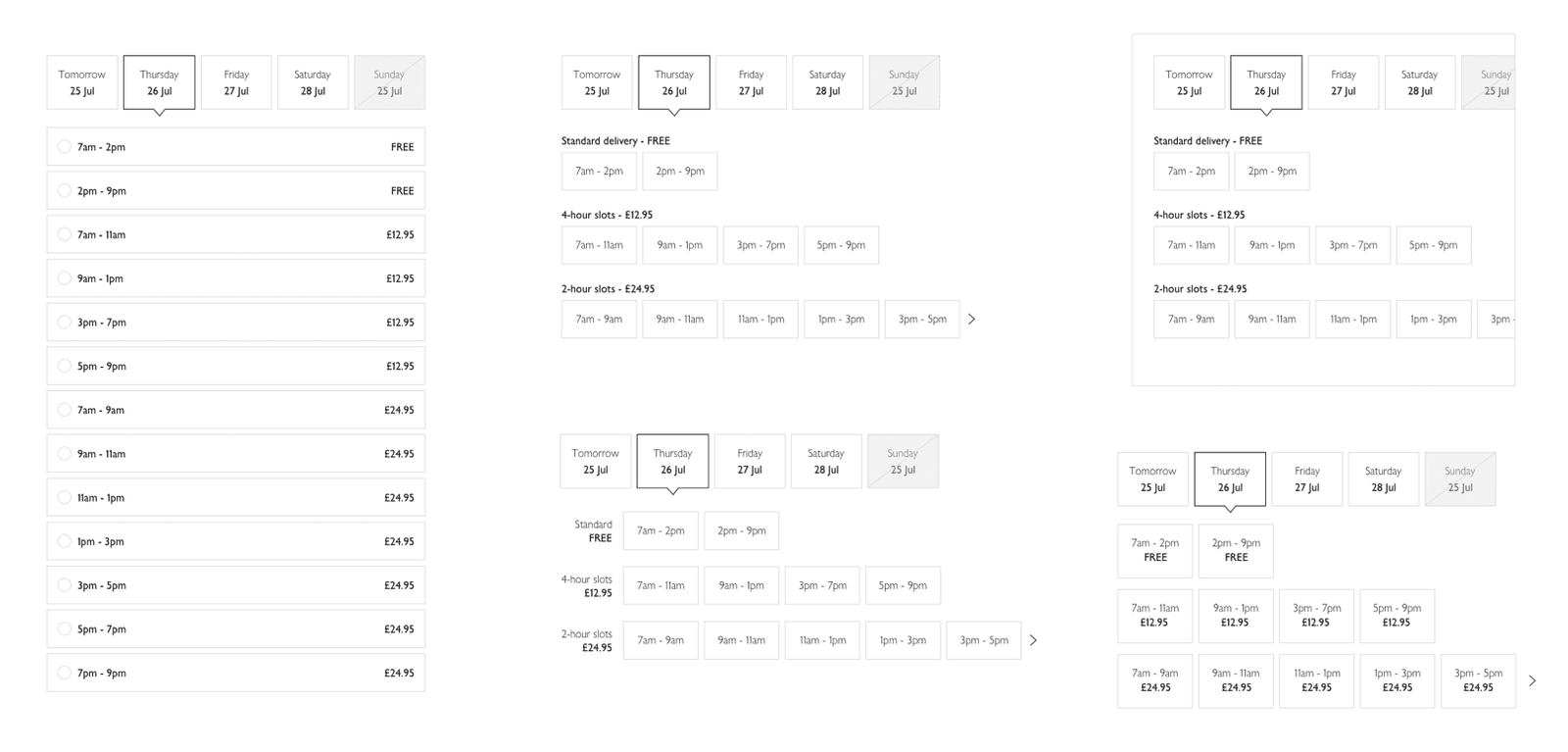
Ideation process - exploring different concepts
After further exploration, I put together some designs ready to be tested in the lab with live participants.
Use the switch (top right of each image) to toggle the feedback on and off. The feedback is a summary of the key points identified in the testing sessions.
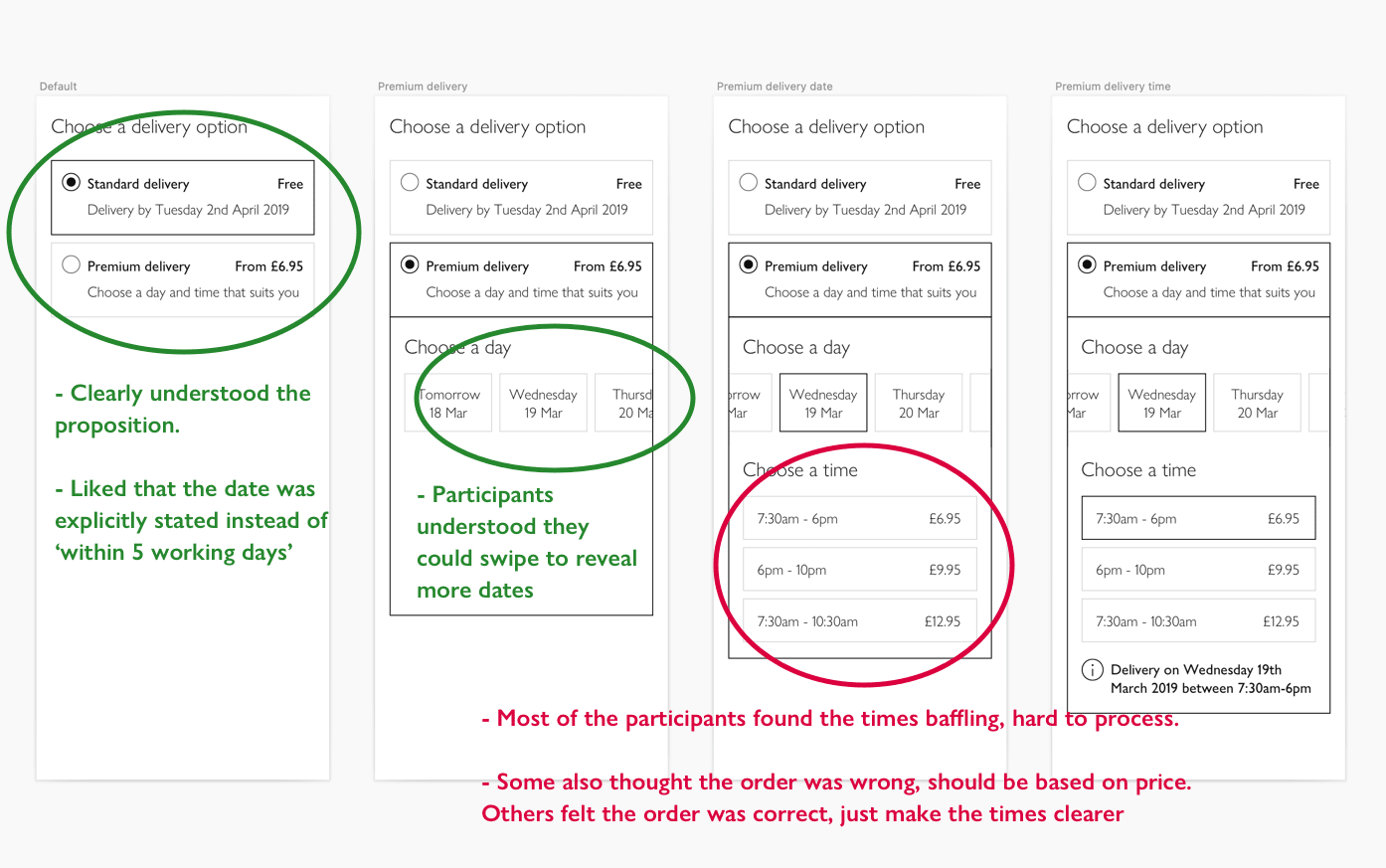
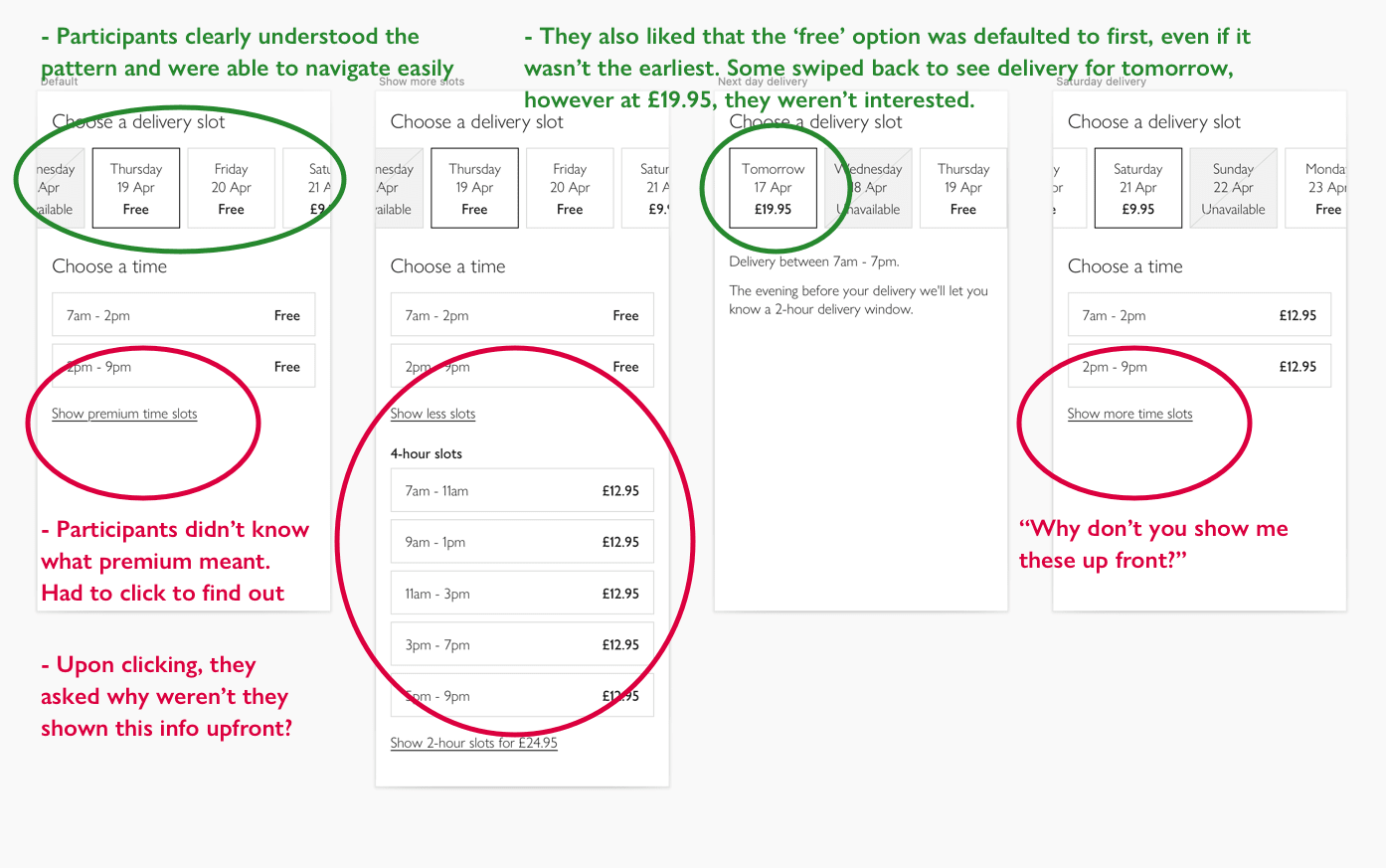
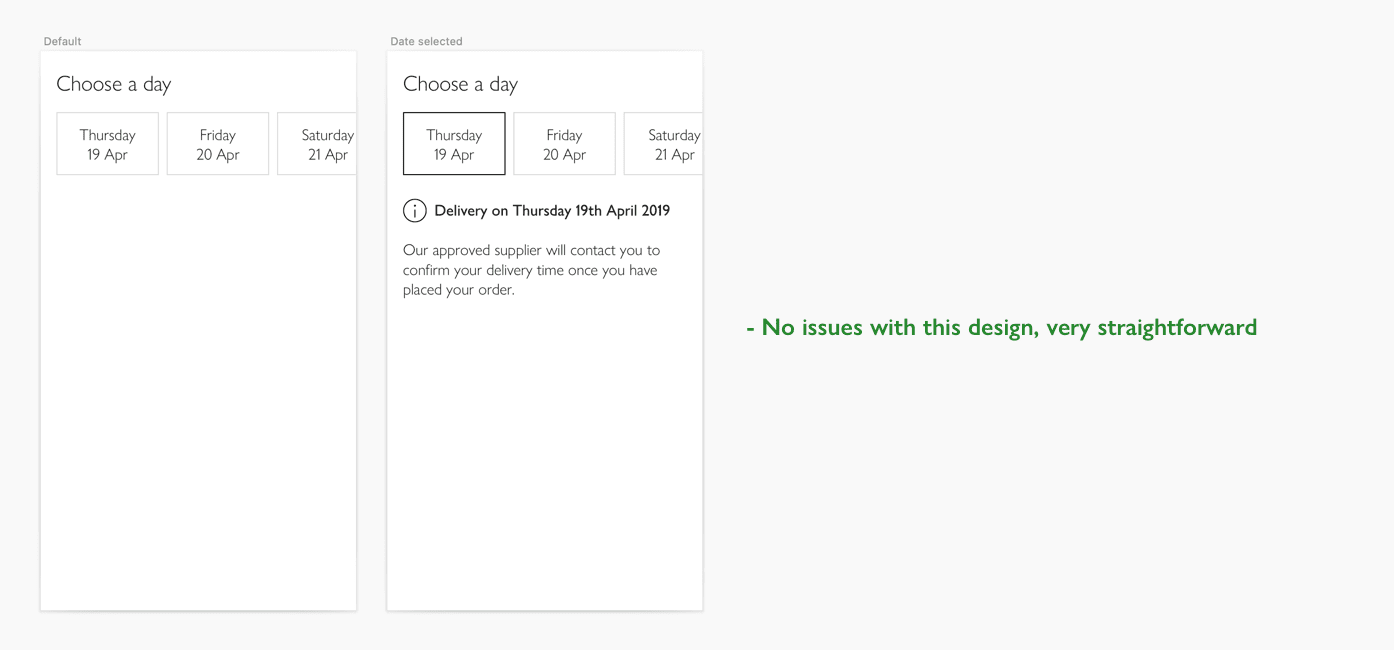
Overall the feedback from the user testing sessions was very positive. All the different delivery types were well understood and participants commented that they liked the consistency between the grids. In reality, most customers would only see one type of grid for most orders, so one could argue consistency isn't as important here. However, we also do 'batched orders' where a customer would order multiple types of items (e.g. a TV with some cables). These would be delivered separately and a customer would see two grids. In this instance, consistency would be very important to prevent confusion.
The struggles participants faced with the test were also very helpful. We agreed that the times for one-man delivery were difficult to process and discussed how we could make this easier to digest. We felt keeping the options in order of price is what the majority of customers would expect, but instead, consider renaming the options so that they were better understood (e.g. 'Evening delivery' instead of '6pm-10pm').
There was a unanimous concern with the GVF grid and not showing all the times upfront. Customers had to tap the 'show premium time slots' link to reveal more time slots. Some questioned what premium actually meant, others felt it would be more expensive and wanted to know by how much. Either way, it was an extra step customers would have liked to avoid.
The rationale for concealing these additional times was two-fold: Firstly, we didn't want to overwhelm the user with a large range of time slots upfront. Secondly, based on previous reports, over 95% of users go with the free option. Therefore seeing the additional time slots wouldn't have been helpful for the majority. As a result, we opted to keep the additional time slots hidden with more descriptive wording, without customers having to click on the links to see our full offering.
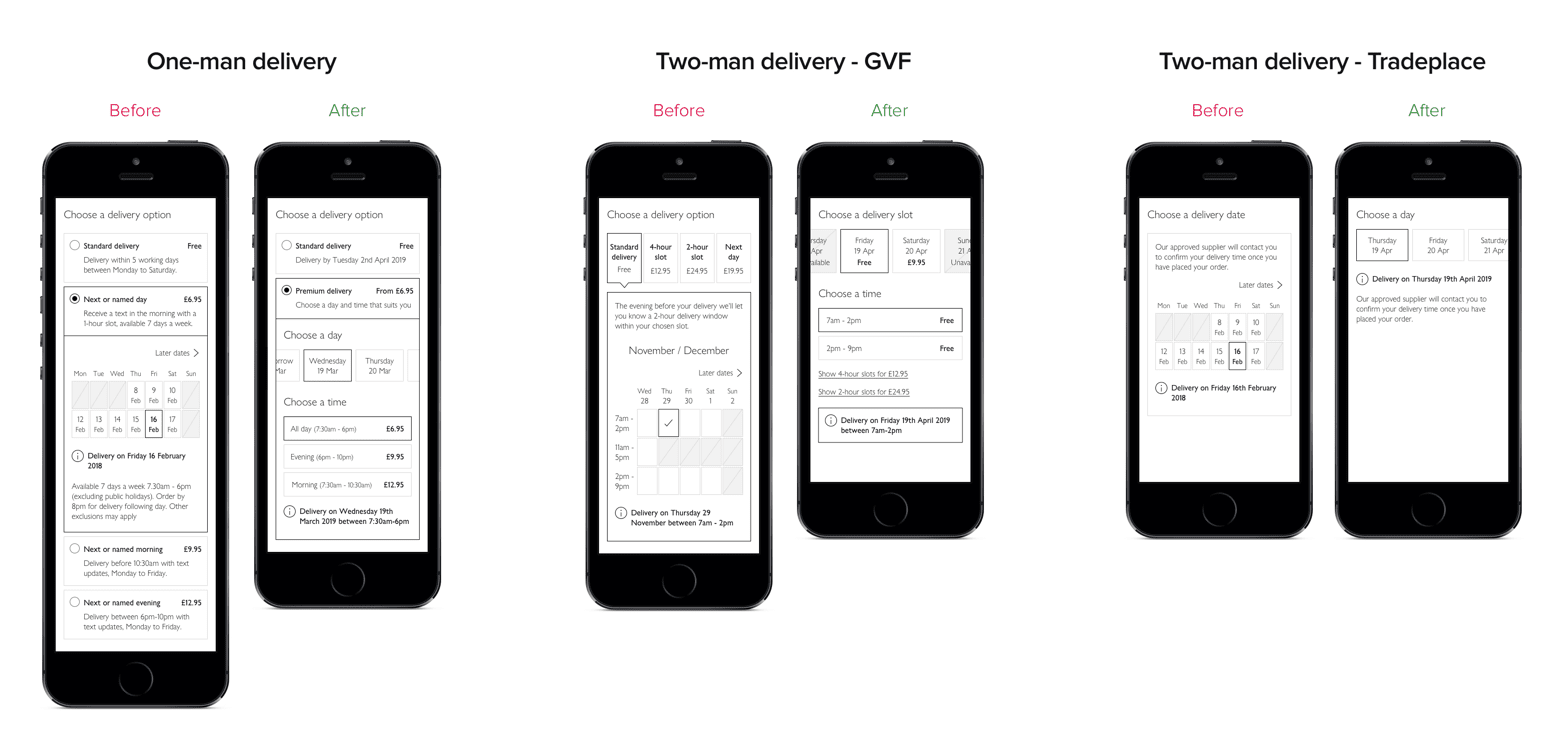
Side-by-side comparison of the new design next to the old design.
This new design is a lot more robust and handles the future propositions with ease.
The final one-man design only shows the 'evening' proposition as the others will be coming in the more distant future. With each new option, there will only be an extra time slot, rather than a completely new option with its own 2-week grid. This will heavily reduce the cognitive load for the customer when choosing a delivery option.
The two-man GVF grid is probably the biggest change. Not only is it much cleaner, but it also handles charging different prices for different days (e.g. Saturday). If John Lewis eventually offered Sunday two-man delivery, this would be simple to do.

The new elements used in all 3 grids, resulting in a consistent design with a cleaner codebase.
At this time of writing (2021), the new delivery grids are not yet live. Although it had been validated with several user testing sessions and this design is required for the future delivery propositions, a big change like this will need to be rolled out in stages. There will also be an AB test to ensure we are not harming conversion. Unfortunately, I left John Lewis before this could take place so the project has now been passed on to my successor. I wait anxiously for the day this project is AB tested and hopefully made live!

The 3 final design grids, side-by-side.